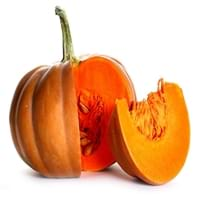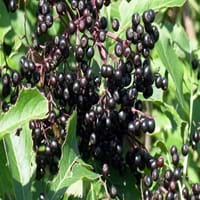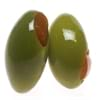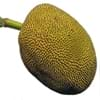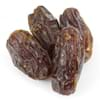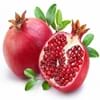Health Benefits
Arthritis treatment, Cancer prevention, High Cholesterol Regulation, Lower blood pressure, Helps Prevent cataract, Prevents gall stones, Ulcer treatment, Weight loss properties
Cancer prevention, Heart care
General Benefits
Boosts respiratory health, Eliminate parasites and infections, Protects against birth defects, Strengthens bones
Anti oxidant properties, Anti-inflammatory properties, Boosts immune system, Controls blood sugar levels, Cures fever, Digestive aid, Eye care, Fights against infections, Flu treatment, Helps in weight loss, Maintains healthy cholesterol level
Skin Benefits
Heals sunburn, Hydrates skin, Skin rejuvenation
Anti-aging benefits, Skin rejuvenation
Hair Benefits
Regulates hair growth
Promotes longer and healthier hair
Allergy Symptoms
Abdominal cramps, Anaphylaxis, Digestive Problems, Dizziness, Eczema, Fainting, Hives, Inflammation, Itching, Tingling sensation in wrist and face, Vomiting, Wheezing
Abdominal pains, Asthma, NA, Sneezing, Sore throat
Side Effects
Kidney and gallbladder diseases
Diarrhoea, Nausea, Vomiting
Lactating Women
Yes
Not Available
Best Time to Eat
Along with meal, Don't eat after meal, Morning time (before lunch)
As a snack in the late afternoon, Don't consume at night and before bed, Eat the fresh ones, avoid mixing with any other foods, don't eat after meal., Morning time (before lunch)
Vitamin B5 (Pantothenic Acid)
Vitamin C (Ascorbic Acid)
Vitamin E (Tocopherole)
Not Available
Vitamin K (Phyllochinone)
Not Available
Lutein+Zeaxanthin
Not Available
Phytosterol
Not Available
Calories in Fresh Fruit with Peel
Calories in Fresh Fruit without Peel
Not Available
Calories in Frozen Form
Not Available
Not Available
Calories in Dried Form
Not Available
Calories in Canned Form
Not Available
Season
All seasons
Autumn
Varieties
Jarrahdale, Peanut, Lakota, Cow, Sugar, Caribean, Red kuri, Buttercup and Pink lady
Adams, Black Beauty, Black Lace, Johns, Nova, Variegated and York
Color
Blue, Green, Orange, Red, White
Black, Red
Inside Color
Creamy Yellow
Magenta
Taste
Creamy, Soft, Sweet
Juicy, Sweet
Soil Type
Clay loam, Sandy loam, Well-drained
Sandy, Well-drained
Climatic Conditions
Warm to hot climate
Warm to hot climate
Facts about
- The name pumpkin has its roots in the Greek word ‘pepon’, meaning ‘large melon’.
- The largest pumpkin ever grown weighed 1,140 pounds.
- Pumpkins were once known for removing freckles & curing snake bites.
- According to a superstitious belief, the "elder tree" was supposed to ward off evil influence & give protection from witches.
- Branches from its tree are also used to make fujara, koncovka & other Slovakian flutes.
Top Producer
China
United States of America
Other Countries
Egypt, India, Indonesia, Iran, Italy, Mexico, Russia, Spain, United States of America
Colombia, India, Mexico
Top Importer
United States of America
Not Available
Top Exporter
China
Not Available
Botanical Name
Cucurbita maxima
Sambucus nigra
Synonym
Cucurbita pepo, Squash
Not Available
Subkingdom
Tracheobionta
Tracheobionta
Division
Magnoliophyta
Magnoliophyta
Class
Magnoliopsida
Magnoliopsida
Subclass
Dillenhidae
Asteridae
Order
Cucurbitales
Dipsacales
Family
Cucurbitaceae
Adoxaceae
Species
Cucurbita mixta
S. nigra
Generic Group
Not Available
Moschatel
Difference Between Pumpkin and Elderberry
We might think that Pumpkin and Elderberry are similar with respect to nutritional value and health benefits. But the nutrient content of both fruits is different. Pumpkin and Elderberry Facts such as their taste, shape, color, and size are also distinct. The difference between Pumpkin and Elderberry is explained here.
The amount of calories in 100 gm of fresh Pumpkin and Elderberry with peel is 26.00 kcal and 73.00 kcal and the amount of calories without peel is 30.00 kcal and Not Available respectively. Thus, Pumpkin and Elderberry belong to and category.These fruits might or might not differ with respect to their scientific classification. The order of Pumpkin and Elderberry is Cucurbitales and Dipsacales respectively. Pumpkin belongs to Cucurbitaceae family and Elderberry belongs to Adoxaceae family. Pumpkin belongs to Cucurbita genus of Cucurbita mixta species and Elderberry belongs to Sambucus genus of S. nigra species. Beings plants, both fruits belong to Plantae Kingdom.
